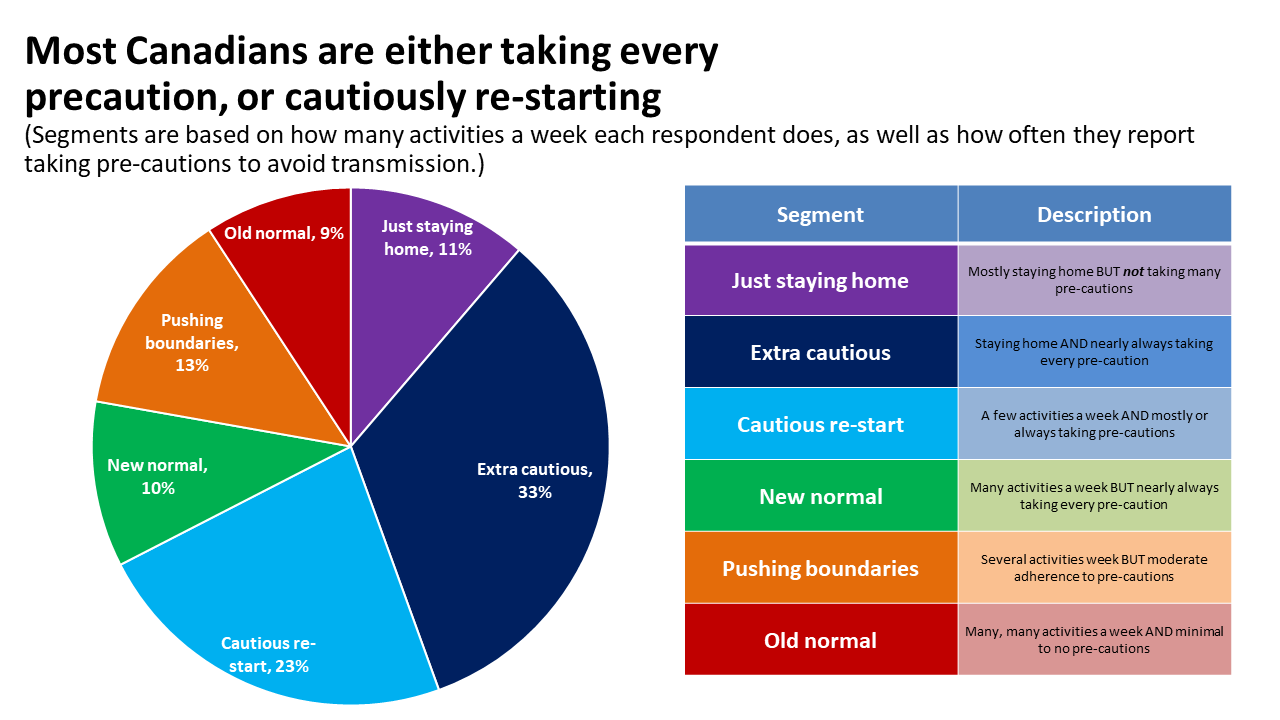
As we enter the second wave of the COVID-19 pandemic, Canadians are becoming more cautious in their social engagement but still have a ways to go before they reach spring levels. Much of the difference lies with one in four people who belong to two small behaviourial clusters – 9% in an “Old Normal” cluster and 13% in a “Pushing the Boundaries Cluster”.
On November 17th, INNOVATIVE released the results of an online poll tracking Canadian’s self-reported social activities, as well as their adherence to safety precautions.
All shopping behaviours and social activities, other than trips to grocery and drug stores are down since the last wave of tracking in September. Over the same period, self-reported behaviours that limit the spread of COVID-19, including hand washing and mask wearing, have remained steady or become more frequent. This is particularly true for mask wearing, where 58% now say they wear a mask all the time when out of their house, compared to only 49% who said the same in September.
Using a combination of self-reported social activities and protective behaviours, INNOVATIVE has segmented the population into six groups to better understand how different Canadians are responding to the ongoing COVID-19 outbreak.

The largest group are called “Extra Cautious” and are doing everything they can to avoid catching or transmitting the virus, by participating in the fewest social activities and always taking precautions when they do leave the home. This group tends to be older and is most concentrated in Quebec. This group has also experienced the largest growth since September when they made up only 23% of the population to now when they are 33%.
The next largest group is the “Cautious Re-Start” segment at 23%, who are engaging in more activities a week, but are still taking most precautions. They are mostly evenly distributed across the country but tend to be slightly older.
The “New Normal” (10%) segment are similar, but engage in even more activities while nearly always taking every precautions. This group is disproportionately younger, suggesting that while young people are still being social, many are trying to do it in a safe way.
Some Canadians have opted to do the opposite and are “Just Staying Home” (11%). This group is not the most cautious group when they leave the house, but they engage in among the fewest activities a week. This group tends to be less concerned about either personally catching the disease or having a family member or friend catch the disease.
Just over 1-in-10 (13%) are “Pushing Boundaries” who are engaging in quite a few activities every week, but are only engaging in moderate adherence to precautions. This group is largest in Atlantic Canada, where COVID-19 cases have remained lower than the rest of the country.
Finally, 9% of Canadians are behaving similarly to how everyone behaved under the “Old normal.” This group are engaging in many activities every week and infrequently taking the precautions they have been advised to take. This group is both disproportionately young, and disproportionately men.
Read the full report here.
































